Hobsons Bay Public Toilet Strategy
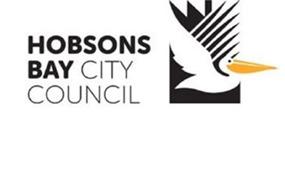
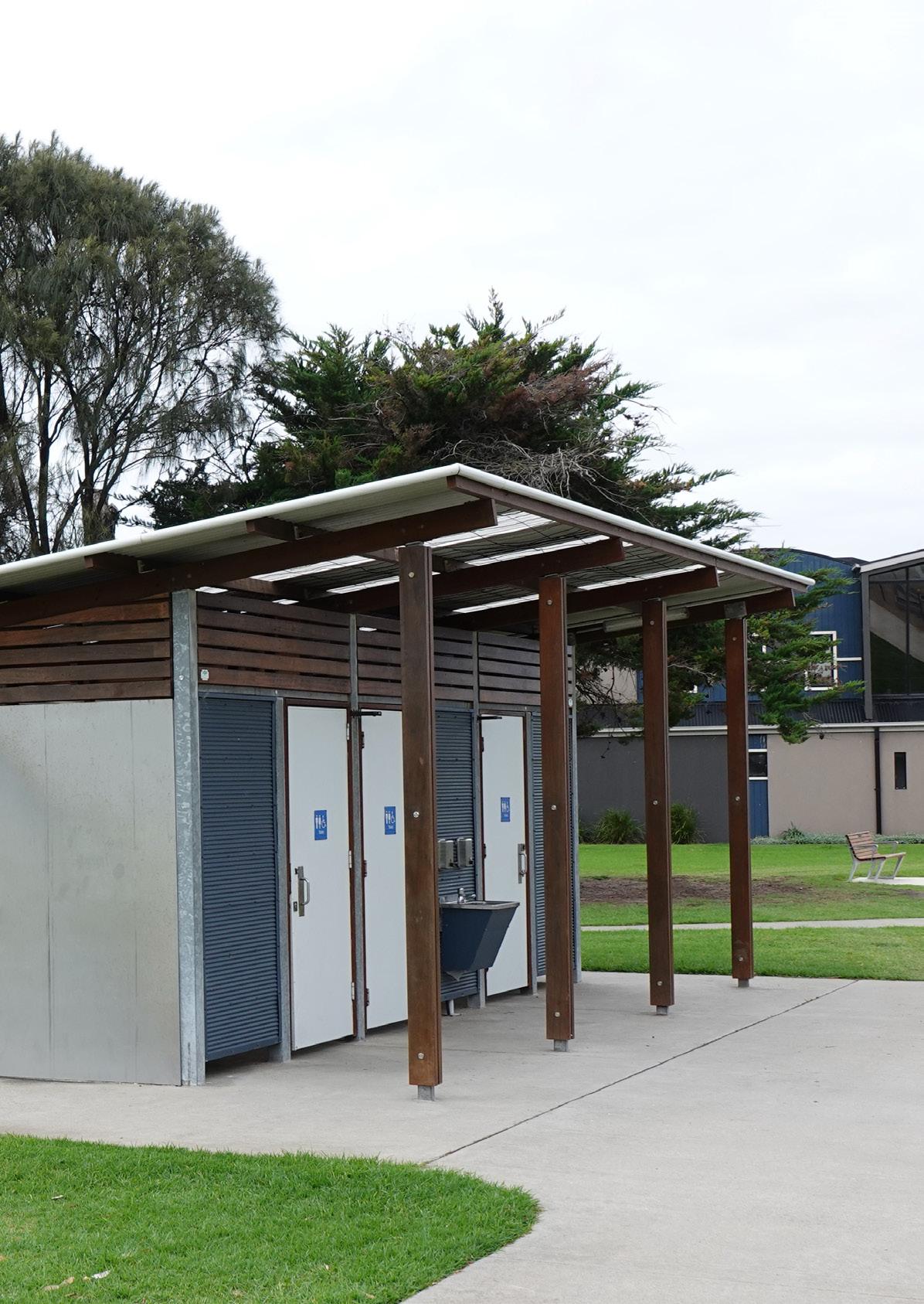
2022-2032
Acknowledgements
Council acknowledges the Bunurong People of the Kulin Nation as the Traditional Owners of these municipal lands and waterways. We recognise the first people’s relationship to this land and offer our respect to their elders past and present.
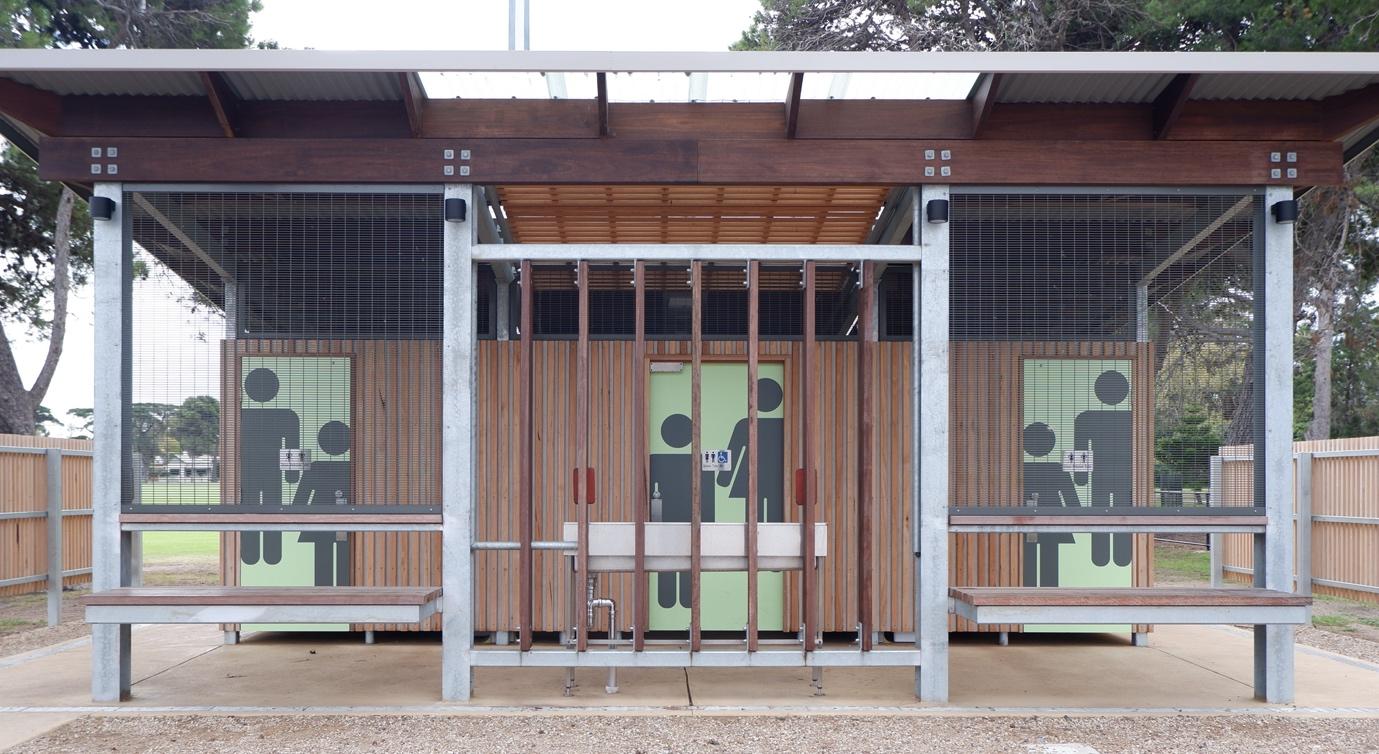
Council acknowledges the legal responsibility to comply with the Charter of Human Rights and Responsibilities Act 2006 and the Equal Opportunity Act 2010. The Charter of Human Rights and Responsibilities is designed to protect the fundamental rights and freedoms of citizens. The Charter gives legal protection to 20 fundamental human rights under four key values that include freedom, respect, equality and dignity.
This strategy was compiled by Hobsons Bay City Council for reference purposes only. For further information contact Hobsons Bay City Council on 9932 1000 www.hobsonsbay.vic.gov.au
Ground Floor 143 Franklin Street
Melbourne Vic 3000 p. 9329 6844 f. 9329 6336 e. office@urbaninitiatives.com.au
November 2022

Strategy November 2022 1
Hobsons Bay Public Toilet
Fearon Reserve, Williamstown
Executive Summary
This Public Toilet Strategy (PTS) will guide the development and management of public toilets in Hobsons Bay during the ten years 2022 2032.
Council recognises that the provision of public toilets is critical to enable all members of the community to use public spaces and participate in community life.
Council currently provides and manages 37 public toilet facilities. This stock comprises predominantly free standing facilities located in parks, activity centres and along the Yarra River and Port Phillip Bay foreshores. Council also provides public toilets within many of its community facilities (e.g. libraries, senior citizens, sports pavilions), however the PTS does not address the management of these.
Existing public toilets are located in a variety of contexts and are of significantly varying age, style and standard, and provide a range of levels of amenity. In recent years, numerous facilities have been updated, and new facilities added to the stock.
The purpose of the Public Toilet Strategy is to guide the provision and management of public toilet facilities in the appropriate places to encourage community health, participation and recreation, while supporting economic development. The PTS includes:
• Criteria for determining where to provide public toilets, and what types of toilet to provide
• An evaluation framework to guide decision making about the provision of public toilets
• A 10 year program of projects (upgrades, replacements and new installations) prioritised according to the evaluation framework
• An additional program of Changing Places
• Principles and guidelines for the planning and development of toilets
• An indication of the anticipated budgetary implications of these actions.
Key recommendations
The key recommendations for the future development and management of Council’s toilet stock are:
• Continue to progressively replace or upgrade older, substandard toilets
• Develop Changing Places in key locations to support people with higher support needs, their families, and carers
• Introduce a program of upgrades to the existing toilet stock with a focus on compliance and signage
• Assess future toilet needs and requests against a new evaluation framework to ensure improved strategic alignment in decision making
• Introduce an annual program of demand and use audits to improve information used in decision making
• Investigate for possible adoption a new approach to signage that indicates the fittings/equipment within facilities and cubicles, rather than indicating expected gender of users
• Establish a set of robust principles to guide planning and development of toilets
• Establish a clear, documented process for making decisions, and implementing projects
• Allocate a consistent annual budget to ensure completion of recommended works within the ten year currency of the Strategy
November
2
Hobsons Bay Public Toilet Strategy
2022
Review of existing facilities
A review of Council’s existing public toilets was undertaken in 2021, including consultation with Council officers responsible for the development and management of toilets. The review found that, while older facilities were of poor standard, generally the numerous newer facilities are providing much better service and amenity to the community.
Challenges in the development of new facilities include:
• Internal and external consultation
• Coordination of service connections
• Post occupancy management
• Design detail: ○
Some paths are not fully compliant for wheelchairs and walking frames ○ The required luminance contrast may not have been achieved between elements of the facility ○

Some signage is not fully compliant ○
Some materials and fittings are performing poorly ○ The detailing and installation of doors has presented management challenges in coastal locations where strong winds are experienced
Accessibility
The development of the Strategy involved a review of contemporary attitudes and practice in the achievement of equitable access to public toilets. Significant progress has been made in ensuring that people of all abilities are able to access toilets. It is now legislated that toilets must conform to AS1428: Design for access and mobility
An emerging issue that presents access challenges to some people is the ‘gendering’ of facilities. Standard practice is that signage includes pictograms to indicate whether facilities are intended for males, females or both genders. Such signage discriminates against people who do not define as one gender or the other, and opens them to the risk of harassment This approach is currently supported by AS1428: Design for access and mobility
It is recommended that Council:
• Investigate an alternative approach to signage based on the principle that signage should indicate the service and equipment that are provided in a facility, rather than the person expected to use it.
• Depending on the result of this investigation, institute an ongoing program focussed on compliance and signage to address these issues.
Strategy November 2022 3
Hobsons Bay Public Toilet
Apex Park, Altona
Evaluation Framework
A framework and process have been developed for evaluating and prioritising new toilet requests and proposals. Key steps at the beginning of any proposal are:
1. Determine whether there is an existing toilet that can service the area.
2. Evaluate and score the proposal against key decision making criteria in the evaluation framework:
• Demand
• Strategic alignment
• Context and siting analysis
3. Undertake a feasibility analysis and preliminary siting exercise to determine:
• that a toilet can be sited:
○ safely ○ without compromising the amenity of the location
• that site services are available and accessible
4. Undertake community consultation (noting that consultation may be part of larger project)
5. Depending on the findings of the community consultation, proceed with design development, documentation, tendering and construction.
Implementation
The Strategy recommends that over the next ten years Council:
• Demolish 2 existing substandard toilets
• Replace or upgrade 2 existing toilets
• Install 15 new public toilets
In addition, seven sites have been identified for the recommended development of Changing Places1:
• Bruce Comben Reserve, Altona Meadows
• McCormack Park, Laverton
• Altona Beach Weaver Reserve, Altona (upgrade to existing facility)
• Williamstown Beach (Sadler Reserve), Williamstown
• Commonwealth Reserve, Williamstown
• Cherry Lake Reserve, Altona
• Newport Lakes Reserve, Newport
In addition, the following matters require further analysis and advocacy:
• Council is currently advocating for the development of the Hobsons Bay Wetland Centre to be developed at Truganina Park/Laverton Creek, Altona Meadows. Consideration will be given to the inclusion of public toilets and Changing Places within this facility.
• The toilet block adjacent to Laverton Active Hall is likely to require upgrading or replacement within the life of this strategy, however this should be considered in the context of planning for broader service and facility development.
• The toilet at the Altona Coles car park may require redevelopment.
1 Changing Places are facilities that are larger than standard accessible toilets with a height adjustable adult sized change table, a tracking hoist and space for two people either side of a peninsula toilet.
Hobsons
Strategy November 2022 4
Bay Public Toilet
Budget framework
There are a number of aspects to the funding of public toilets:
• Operational Cleaning and maintenance
• Capital New and refurbishment
It is recommended that additional allocations be made for:
• Operational Annual usage audit
• Capital Compliance and signage upgrades
A tranche of possible projects for evaluation was identified by a combination of Council officer recommendation, investigation and community suggestions. These were scored using the evaluation framework, and anticipated costs identified to provide an overview of the funding requirements over the life of this strategy.
Seventeen possible toilet projects were evaluated and scored against the criteria established in the evaluation framework. Out of a possible maximum score of 15, the proposals received scores ranging from 8 14. The scores have also been applied in a sensitivity test to guide prioritisation of projects depending on budget availability. Should allocation of funding fall short of that anticipated for the implementation of all projects, then low scoring projects may be cancelled or deferred.
5
Hobsons Bay Public Toilet Strategy November 2022
Full program Sensitivity test Evaluation score Exclude sites scoring < 10 Exclude sites scoring < 11 Anticipated 10 year cost $3,685,000 $2,985,000 $2,460,000 Anticipated annual cost $368,500 $298,500 $246,000
Proposed
Item Model Value
Annual usage audit $10,000 Cleaning and maintenance Standard $300,000 Exeloo $170,000 Total operational $480,000* Capital Compliance and signage improvement program $10,000 New and refurbishment $246,000 $368,500 Total capital $256,000 $378,500* * Indexed to CPI
Proposed annual budget framework
Table 1
public toilets actions 2022 2023
Operational
Table 2
Changing Places are anticipated to cost approximately $170,000 each x 7 = $1,190,000 Council can choose to fund these facilities itself, however, given that the State Government may provide funding for the development of Changing Places, the costs of these have not been included in the budget calculation.
Site Suburb Score Recomm endation Recommend ed toilet type CP 1 Newport Park Newport 14 New Standard 2 Williamstown Botanic Gardens Williamstown 13 New Standard 3 Donald McLean Reserve Spotswood 13 Demolished construct new Standard 4 Borrack Square Altona North 12 New Exeloo 5 Bruce Comben Res Altona Meadows 12 Project currently in planning Standard ü 6 The Circle Altona North 12 New Exeloo 7 Sadler Reserve Williamstown 12 New Standard ü 8 Blenheim Rd Res Altona North 11 Currently under construction Standard 9 Hudson’s Road Spotswood 11 New Exeloo 10 G. Den Dulk Res Altona 10 New Standard 11 Homestead Run Seabrook 10 New Standard 12 Langshaw Res Altona North 10 New Standard 13 Leo Hoffman Res Newport 9 New Standard 14 D. N. Duane Res Altona North 9 New or investigate access to pavilion toilet Standard 15 C. W. Carlsson Res Altona Meadows 9 New Standard 16 Ford Reserve Altona 8 Demolish existing NA 17 R J Cooper Res Altona North 8 New Standard 18 Warmies Boat Ramp Newport Extg Replace or upgrade Standard/ Exeloo 19 W. G. Cresser Res Seaholme Extg Demolish existing NA 20 Harrington Square Altona Extg Replace or upgrade Standard/ Exeloo
November
6
Hobsons Bay Public Toilet Strategy
2022
Table 3 Proposed public toilets actions 2022 2023


Hobsons Bay Public Toilet Strategy November 2022 7
Contents
! "#$%&'()$*&#
Purpose
. /0)12%&(#'
Existing Conditions
Annual expenditure
4 5%*#)*6789
3 5(:7*)+$&*78$+)&#;*2(%0$*	<$=6&7&2=+0#'+'89*2#
Locations
Toilet types and configurations
4.3 Associated facilities and features
4.4 Changing Places
4.5 Signage
4.6 Design of toilets at
locations
4.7 Process
> ?@07(0$*&#+A%0B8C&%1 ,,,,,,,,,,,,,,,,,,,,,,,,,,,,,,,,,,,,,,,,,,,,,,,,,,,,,,,,,,,,,,,,,,,,,,,,,,,,,,,,,,,,,,,,,,,,,,,,,,, .D E "B678B8#$0$*&# ,,,,,,,,,,,,,,,,,,,,,,,,,,,,,,,,,,,,,,,,,,,,,,,,,,,,,,,,,,,,,,,,,,,,,,,,,,,,,,,,,,,,,,,,,,,,,,,,,,,,,,,,,,,,,, 4! 6.1 Proposed Public Toilet projects and priorities 31 6.2 Further work 34 6.3 Associated documents 34 F*$89+;&%+#8C+5G+9(2289$8'+:=+)&BB(#*$= ,,,,,,,,,,,,,,,,,,,,,,,,,,,,,,,,,,,,,,,,,,,,,,,,,, 4E G&*78$+6%&6&907+8@07(0$*&#+$8B670$8 ,,,,,,,,,,,,,,,,,,,,,,,,,,,,,,,,,,,,,,,,,,,,,,,,,,,,,,,,,,,,, 4H
Table of
Executive Summary
1.1
8 1.2 Hobsons Bay 8 1.3 Policy Context 9 1.4 Council’s Role 11 1.5 Public Toilets to which this strategy applies 12 1.6 Methodology/Process 12 1.7 Glossary 13
!3 2.1
14 2.2
17 2.3 Toilet provision benchmark 17 2.4 Regulatory Framework 17 2.5 Gender Impact Assessment 19 2.6 Population Forecasts 20 2.7 Community attitudes 20
..
.3 4.1
24 4.2
25
26
26
27
foreshore
28
28
1 Introduction
Hobsons Bay City Council recognises that the provision of public toilets is critical to enable all members of the community to use public space and participate in community life.
The provision and management of public toilets has significant social and budgetary implications, both capital and operational. It is therefore critical that Council have a robust and sophisticated framework for making decisions about the location and design of toilets to ensure that the public benefit is maximised and that the provision of toilets represents value for money.
This strategy supersedes the previous version that was prepared in 2013.
1.1 Purpose
The purpose of the Public Toilet Strategy is to establish a framework for the provision and management of public toilet facilities in the appropriate places to encourage community health, participation and recreation, while supporting economic development.
It includes guidelines on the appropriate provision of toilets, and a ten year program of works to improve the facility stock
1.2 Hobsons Bay
The City of Hobsons Bay is situated at the northern end of Port Phillip Bay, about 7kms west of central Melbourne. Hobsons Bay is known for its rich natural environment, its maritime history and its industrial strength.
The Yalukit Wilum clan were the first people to occupy the area now known as Hobsons Bay. A number of sites of significance to the Aboriginal community are located throughout the municipality, particularly along the coastal trail. Council recognises the Bunurong People of the Kulin Nation as the Traditional Owners of these municipal lands and waterways.
Hobsons Bay was created on 22 June 1994, following the amalgamation of the former Cities of Williamstown and Altona with parts of Laverton and South Kingsville.
It includes the suburbs of Altona, Altona Meadows, Altona North, Brooklyn, Laverton, Newport, Seabrook, Seaholme, South Kingsville, Spotswood, Williamstown and Williamstown North. Each suburb has its own unique character, from the historic seaport of Williamstown with its range of heritage buildings, to the more recently developed residential areas of Altona Meadows and Seabrook. Hobsons Bay also has a range of major industrial complexes, which contribute significantly to the economy of Victoria.
Hobsons Bay is unique to the Western Metropolitan Region. It covers an area of approximately 64 square kilometres with over 20kms of coastline. It is also home to significant coastal wetlands, five creek systems, remnant native grasslands, and important flora and fauna habitats, which makes up 24 per cent of the city’s total land area.
Hobsons Bay Public Toilet Strategy November 2022 8
1.3 Policy Context
This section sets out the key Council policy documents that have guided the development of this strategy, and that in turn will be supported by the implementation of the Strategy.
Hobsons Bay 2030 Community Vision
By 2030, embracing our heritage, environment and diversity, we the community of Hobsons Bay will be an inclusive, empowered, sustainable and visionary community, led and supported by a progressive Council of excellence.
Council Plan 2021 – 25
The Council Plan 2021 25 establishes the following objectives:
1. HEALTHY, EQUITABLE AND THRIVING COMMUNITIES.
Be a city where all members of the community can participate equitably, feel safe, connected and achieve good health and social wellbeing.
2. VALUING OUR ENVIRONMENT.
Foster a sustainable way of living in response to climate change through active involvement in alternative energy use, reduction of waste, enhancement and conservation of our natural environment.
3. VIBRANT PLACE AND ECONOMY. Support a resilient local economy that facilitates job growth and retention, promoting Hobsons Bay as a place to live, work, invest, recreate and visit.
4. VISIONARY COMMUNITY INFRASTRUCTURE. Develop and maintain infrastructure to promote liveability, planning for the future need and growth of the community, while preserving heritage, environment and neighbourhood character.
5. A HIGH PERFORMING ORGANISATION.
Delivering value for money through efficient processes, digital transformation and continuous improvement with a willingness to try new approaches as to how we do, what we do. We will be transparent and responsive to the needs of the community through meaningful connection, communication and engagement.
A Fair Hobsons Bay for All 2019–23
A Fair Hobsons Bay for All 2019 23 aims to increase fairness and equity for people who live, work, learn and play in Hobsons Bay. It prioritises populations who may be more likely to experience disadvantage, including people with a disability, culturally and linguistically diverse communities, women and girls, and LGBTIQA+ communities.
The policy establishes key objectives for supporting these priority populations by supporting access for all people within amenities, public infrastructure, community facilities, housing and neighbourhoods, and ensuring that everyone has equitable opportunities to access the foreshore and open space. These objectives also align with the Victorian Governments State Disability Plan Inclusive Victoria: State Disability Plan 2022 26 and Universal Design principles.
Hobsons Bay Public Toilet Strategy November 2022 9
Image 1 Overview of Policy Framework A Fair Hobsons Bay for All 2019 23

Universal Design Policy Statement for Council buildings & the public realm, 2017
The purpose of this document is to provide Council with guidance on how the design of buildings and the public realm can improve accessibility through the use of Universal Design principles:”
In relation to public toilets the policy states the need for universal access, and references AS1428.1 2009 Design for access and mobility in achieving this.
Hobsons
November 2022 10
Bay Public Toilet Strategy
1. Equitable
2. Flexibility
3. Simple
4. Perceptible
5. Tolerance
6. Low
7. Size
space
use
in use
and intuitive use
information
of error
physical effort
and
for approach and use
Open Space Strategy 2018 28
The Hobsons Bay Open Space Strategy is Council’s key document that guides the provision, protection, planning, design and management of open space. The Strategy defines an open space hierarchy for Hobsons Bay, and classifies its open spaces under that hierarchy.
The Strategy also determines the toilet service standards to be provided within the hierarchy of Council managed parks and reserves, based on the size, function, catchment, length of stay of each space, and other key features and infrastructure.
Activity Centres Strategy 2019-36
The Hobsons Bay Activity Centres Strategy (HBACS) outlines a vision for Hobsons Bay’s activity centres, and sets out eleven directions, supported by strategies, and place based policies and actions, to bring this vision to fruition as population grows. The appropriate provision of public toilets within the hierarchy of activity centres plays a critical role in achieving the vision.
Economic Development Strategy 2015-2020
The Economic Development Strategy contains an aspiration that Hobsons Bay will become a community that is characterised by high quality activity centres that meet the needs of local businesses, residents and visitors.
The provision of public toilets in high level activity centres will support this vision.
Experience Hobsons Bay: Tourism Strategy 2019-2024
Experience Hobsons Bay: Tourism Strategy 2019-2024 notes the importance of the visitation to the local economy, and includes an objective to improve visitor experiences
The provision of public toilets in high demand locations will support this ambition
1.4 Council’s Role
Hobsons Bay currently provides and manages approximately 37 public toilet facilities.2 These are located in a variety of contexts and are of significantly varying age, style and standard, and provide a range of levels of amenity.
Council’s role in providing public toilets comprises:
• Planning, prioritising and budgeting for toilet construction and upgrades
• Servicing and maintenance reactive and planned
• Decommissioning and demolishing toilets that are at the end of their useful life, or that are no longer required.
2 This number is predominantly freestanding toilets located in parks and shopping strips, and a small number that are attached to other facilities.
Hobsons Bay Public Toilet Strategy
11
November 2022
1.5 Public Toilets to which this strategy applies
The facilities that are covered by this strategy are those that are managed independently of Council community and sporting facilities:
• Freestanding facilities
• Facilities that are attached to other structures, but managed independently of management of that facility or service.
This strategy does not apply to:
• Private public toilets Toilet facilities that are owned and maintained by private entities including shops, local businesses, cafes, restaurants and service stations
• Service hosted public toilets Public toilet facilities associated with Council facilities or buildings including libraries and sporting pavilions. These types of toilets are not directly accessible by the public and may require users to pass through a service point.
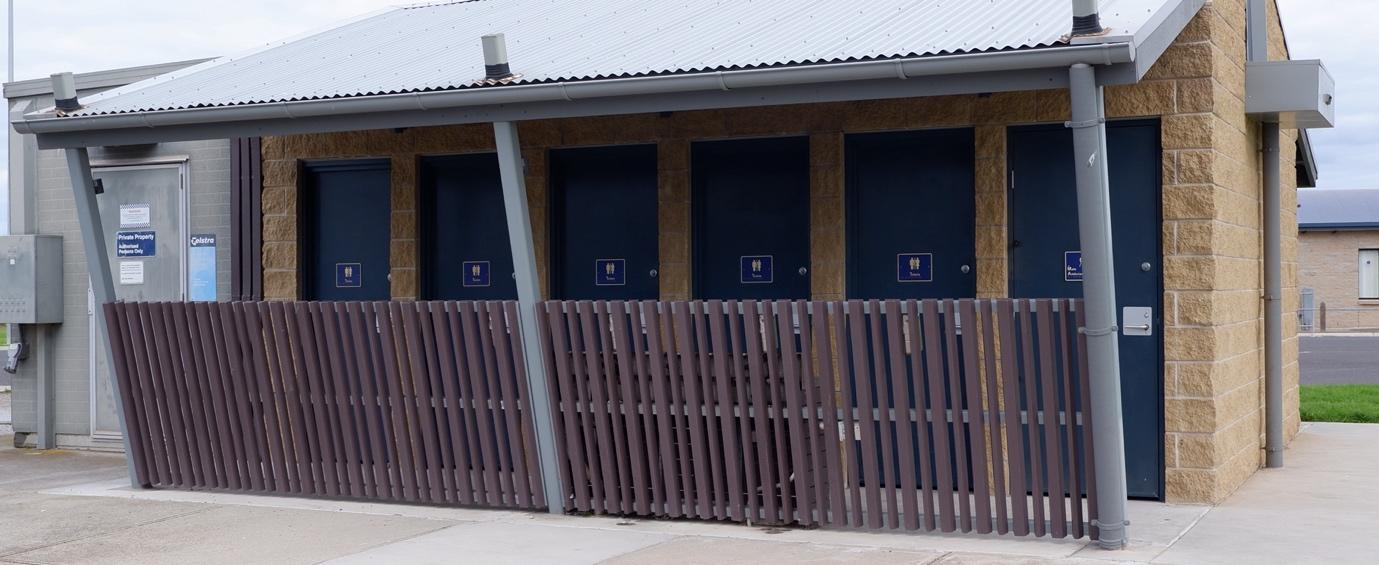
1.6 Methodology/Process
This strategy was developed via the following process and tasks:
• Consultation with Council staff
• A tour of the municipality and inspection of a range of toilets and their contexts
• Review of relevant background documents, policies and strategies, including the previous Public Toilet Strategies (2007, 2013)
• Review of contemporary thinking and practices in the provision of public toilets, including Council’s obligations under the Gender Equality Act 2020 to promote gender equality in policies, programs and services that affect the public
• Preparation of Background Report
• Phase 1 community consultation, including discussions with a number of advocacy groups
• Development of this draft Public Toilet Strategy
Bay Public Toilet Strategy November 2022 12
Hobsons
Altona Boat Ramp
1.7 Glossary
Accessible
Accessible toilets are specifically designed to provide enough space to accommodate wheelchair access and assistance when transferring from wheelchair to toilet. Accessible toilets include features such as lower mirrors and washbasins, contrasting toilet seat colour, grab rails and braille signage.

Activity Centre
Areas that provide a focus for services, employment, housing, transport and social interaction. They range in size and intensity of use from smaller neighbourhood centres to major suburban centres and larger metropolitan centres. (Plan Melbourne 2017 50)
All gender
All gender toilets are facilities that can be used by everyone. They do not have gendered signage, and do not require the person using them to define into a gender. Some All gender toilets incorporate additional facilities e.g. accessible toilets, baby changing facilities, or showers.
Ambulant toilet
Ambulant toilets are specifically designed for those with ambulant disabilities that do not require the extra space that is provided by Accessible toilets. Primarily, they are for those that do not require the use of a wheelchair, for example, those with sensory loss, arthritis or require the use of a walking frame.
Changing Places
Changing Places are facilities that are larger than standard accessible toilets with a height adjustable adult sized change table, a tracking hoist and space for two people either side of a peninsula toilet.
Exeloo
Brand name: modular automated toilet for which there is a single supplier in Victoria W C Innovations.
Gender-segregated
Gender segregated toilets are facilities that are designed and signed to be used by people who identify as male or female. They are signed with the relevant male or female gender symbol.
Hobsons Bay Public Toilet Strategy November 2022 13
Apex Park, Altona
2 Background
2.1 Existing Conditions
Hobsons Bay currently provides and manages 37 public toilet facilities. This stock comprises predominantly free standing facilities located in parks, shopping centres and along the Yarra River and Pt Phillip Bay foreshores. Council also provides public toilets within many of its community facilities (eg libraries, sports pavilions), however the PTS does not address the management of these. Council’s existing stock has been developed in response to understandings of need and to achieve the objectives of inclusivity and the commitment to providing public toilets to support active participation in community life and the public realm. Existing public toilets are located in a variety of contexts and are of significantly varying age, style and standard, and provide a range of levels of amenity.

November
14
Hobsons Bay Public Toilet Strategy
2022
Aviation Road, Laverton
Site* Suburb 10 Apex Park Altona 43 P A Burns Reserve Altona 15 Cherry Lake Park Altona 17 Coles Carpark Altona Ford Reserve Altona 14 Fresno St Altona 12 Harrington Square Altona 16 Logan Reserve Altona 11 G. H. Ransom Reserve Altona 18 Weaver Reserve Altona 8 Altona Meadows Community Park Altona Meadows 9 H. D. Graham Reserve Altona Meadows 7 A. B. Shaw Reserve Altona Meadows 44 Tatman Reserve Altona Meadows 24 G. J. Hosken Reserve Altona North 42 Blenheim Road Reserve Altona North 41 Brooklyn Reserve Brooklyn 1 Aviation Road Laverton 2 Laverton Active Hall Laverton 3 Curlew Park Laverton 4 Lohse Street Reserve Laverton 5 McCormack Park Laverton 32 Greenwich Reserve Public Toilet Newport 29 Newport Lakes Newport 30 Newport Bus Stop Newport 33 Warmies Boat Ramp Newport 22 Altona Boat Ramp Seaholme 20 R. Frazer Reserve Seaholme 21 W. G. Cresser Reserve Seaholme 26 Edwards Reserve South Kingsville 35 Commonwealth Reserve Williamstown 38 Fearon Reserve Williamstown 34 L. E. Burgoyne Reserve (Parks Vic) Williamstown 40 Point Gellibrand Coastal Heritage Park (Parks Vic) Williamstown 36 Williamstown Beach (Surf Lifesaving Club) Williamstown 37 Williamstown Beach (Sebastians) Williamstown
* Note that this facility numbering is aligned with that in Council’s PT database and that there are gaps in the numbering
Table 4 Current provision of public toilets by location
Hobsons
Strategy November 2022 15
Bay Public Toilet




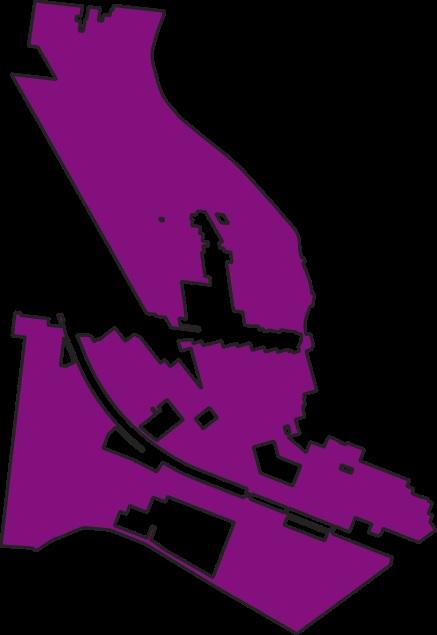









































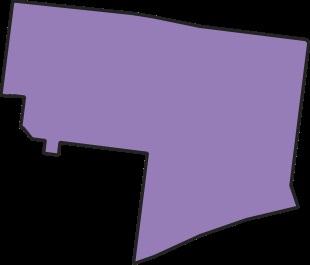






























































































































































































Hobsons Bay Public Toilet Strategy November 2022 16 Plan 1 Existing public toilets Exe oo Toi ets S andard Toi ets Hobsons Bay Mun cipa i y Ma or Act vi y Cen er Large Ac iv ty Center Med um Act v ty Center Ra l Stat ons Ra lway L ne Ma or Road Water Areas Planning Zone ndustr al Comprehensive development Commonweal h land no con rol ed by plann ng scheme Commerc a M xed use Port zone Pub c use Spec al use Transpor Res den ia F oodway LEGEND SEABROOK ALTONA MEADOWS LAVERTON ALTONA SEAHOLME W LLIAMSTOWN NORTH W LLIAMSTOWN PORT PHILLIP BAY NEWPORT SPOTSWOOD SOUTH KINGSVILLE ALTONA NORTH BROOKLYN 7 1 2 3 4 5 12 17 21 24 43 41 44 26 27 42 28 29 30 32 33 34 35 40 36 3738 22 20 16 18 10 11 14 15 8 9
2.2 Annual expenditure
In the ten years up to June 2022 Council spent approximately $2.69 million on public toilet construction and upgrades, equalling approximately $270,000 /annum.
2.3 Toilet provision benchmark
To provide a perspective on Council’s provision of public toilets, Hobsons Bay has been compared to a number of Melbourne metropolitan municipalities. This comparison shows that Hobsons Bay is about average in the number of facilities that it currently provides per 10 km2 and high in the number per 100,00 people
Municipality
Bayside 50 174,378 62 12.40 3.5555
Brimbank 123 208,714 12 0.98 0.5749
Darebin 54 161,609 58 10.74 3.5889 Glen Eira 39 153,858 85 21.79 5.5246 Includes sports facilities
Hobsons Bay 64 96,470 41 5.78 3.8354 Manningham 113 125,508 34 3.01 2.7090
Maribyrnong 31 91,387 9 2.88 0.9848 10 Proposed Yarra 20 98,521 35 17.95 3.5525
* Year varies 2019 2021
Table 5 Comparison of municipal public toilet provision
2.4 Regulatory Framework
There is a range of legislation and regulation governing the design and construction of public toilets, including the Victorian Building Act 1993, the Building Regulations 2018, the National Construction Code 2019, the Disability Discrimination Act 1992, Australian Standard 1428.1-2009 Design for access and mobility, and the Gender Equality Act 2020.
Disability Discrimination Act 1992
The Disability Discrimination Act (DDA) makes it against the law for public places to be inaccessible to people with a disability.
AS 1428.1 Design for access and mobility
AS 1428.1 Design for access and mobility details the requirements for both ‘accessible’ and ‘ambulant’ toilets as follows:
Accessible toilets are specifically designed to provide enough space to accommodate wheelchair access and assistance when transferring from wheelchair to toilet. Accessible toilets include features such as lower mirrors and washbasins, contrasting toilet seat colour, grab rails and braille signage.
Ambulant toilets are specifically designed for those with ambulant disabilities that do not require the extra space that is provided by Accessible toilets. Primarily, they are for those that do not require the use of a wheelchair, for example, those with sensory loss, arthritis or require the use of a walking frame.
November
17
Hobsons Bay Public Toilet Strategy
2022
Area Km2 Population* No Toilets Toilets/ 10 Km2 Toilets/ 100,000 ppl Comment
Victorian Building Act 1993, the Building Regulations 2018, the National Construction Code 2019
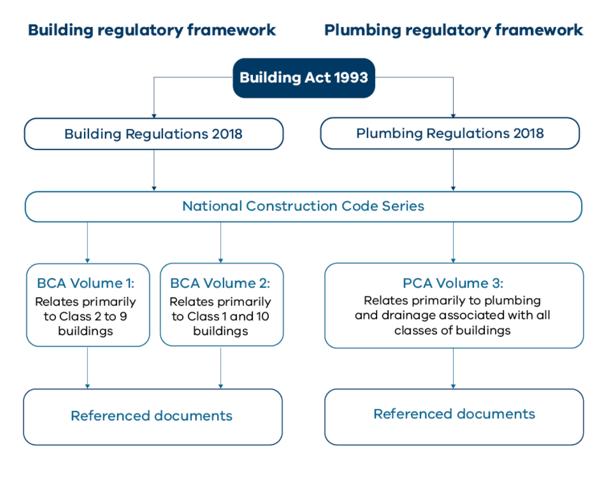
The Victorian Building Act sets out the framework for the regulation of building construction, building standards and the maintenance of specific building safety features.
The objectives of the Victorian Building Act are to:
• protect the safety and health of people who use buildings and places of public entertainment;
• improve the amenity of buildings.
The purpose of the Victorian Building Act includes to regulate building work, building standards, plumbing work, plumbing standards and to regulate building practitioners and plumbers.
Gender Equality Act 2020
The Act promotes gender equality by:
• Requiring local councils to take positive action towards achieving workplace gender equality
• Requiring these organisations to consider and promote gender equality in their policies, programs and services
• Establishing the Public Sector Gender Equality Commissioner to provide education, support implementation and enforce compliance
November
18
Hobsons Bay Public Toilet Strategy
2022
Image 2 Building Regulatory Framework www.vba.vic.gov.au/building/regulatory framework
2.5 Gender Impact Assessment
The Victorian Gender Equality Act 2020 requires public sector organisations to undertake gender impact assessments (GIAs) to assess how their policies, programs and services affect people of different genders to ensure that their work does not unintentionally reinforce inequalities.
Section 6(8) of the Act outlines that “gender inequality may be compounded by other forms of disadvantage or discrimination that a person may experience based on Aboriginality, age, disability, ethnicity, gender identity, race, religion, sexual orientation and other attributes.” This concept is referred to as “intersectional gender inequality”.
A Gender impact assessment + (+ = intersectionality) is designed to help organisations think critically about how policies, programs and services will meet the different needs of women, men and gender diverse people, and that intersectionality recognises that the causes of disadvantage or discrimination do not exist independently, but intersect and overlap with gender inequality, magnifying the severity and frequency of the impacts while also raising barriers to support.
The purpose of gender impact assessment is to create better and fairer outcomes, and make sure all people have equal access to opportunities and resources. There is flexibility in the approach to GIAs to meet obligations under the Gender Equality Act 2020.
As part of Council’s commitment to gender equality, the review of the Public Toilet Strategy was selected to include a trial GIA+ in late 2021 before broader Council rollout. A Gender Impact Assessment template was used with four steps to guide and prompt thinking and direction, including:
1. Define the issues and challenge assumptions
2. Understand the context
3. Options Analysis
4. Make recommendations
Through this process, Council consulted representatives from a variety of leading advocacy, social services and community groups representing diverse communities such as the LGBTQI+, culturally and linguistically diverse people (CALD), women and children, people with disability, and people experiencing homelessness.
Some of the key lessons from the GIA+ process and the impacts on diverse communities’ access to public toilets include:
• For some people, there are structural, societal, cultural, and physical barriers to accessing and using public toilets
• Some people have experienced discrimination, harassment and violence due to their sexuality, gender, race, ability, and age, when using public toilets
• Public toilet provision traditionally favours normative gender conventions and may unintentionally exclude diverse communities
• Certain toilet configurations and design features may make some users feel unsafe, unwelcome, confused, and fail to meet specific needs
• Signage and information may discriminate, confuse, or exclude diverse communities
Hobsons Bay Public Toilet Strategy November 2022 19
In response to this assessment it is recommended that Council:
• Determine a standard practice for the configuration of cubicles that best achieves a balance between inclusivity, practicality and value for money.
• Investigate an alternative approach to signage based on the principle that signage should indicate the service and equipment that are provided in a facility, rather than the person expected to use it
• Depending on the result of this investigation, institute an ongoing program focussed on compliance and signage to address these issues.
2.6 Population Forecasts
In 2022 Hobsons Bay’s population is 101,749 . This is forecast to increase by 8% to 2027 and 15% to 2032. (https://forecast.id.com.au)
As set out in the Council Plan 2021 25, across Hobsons Bay, neighbourhoods are ageing at different rates. Between 2020 and 2025:
• Williamstown and Altona Meadows are expected to have the largest growth in the number of residents aged 55+years
• The largest increase in the number of children is expected in Altona North, Altona and Seaholme
• The number of children is expected to decline in Seabrook, Newport and Altona Meadows
Hobsons Bay’s population comprises 51% Female, 49% Male and 7% LGBTIQA+
It is estimated that 16,995 of Hobsons Bay residents have a disability.
Increasing demand
It is impractical to precisely align the provision of public toilets to demographic changes in specific suburbs. However this demographic data, combined with the ambitions of the Council Tourism Strategy, does illustrate that demand for public toilets will grow over the next ten years, both from residents and visitors
2.7 Community attitudes
Community consultation regarding experiences with and attitudes to Hobsons Bay’s public toilets was undertaken during April and May 2022. During this period, Council sought feedback on the condition of the existing public toilets and where people thought there were gaps in the public toilet network. A survey was hosted on the Participate Hobsons Bay website, people were invited to meet onsite at Ransom Reserve on 30 April 2022 and also online via a zoom session on 11 May 2022.
Overall, the community who responded to the engagement process thought the standard of public toilet provision and their conditions were passable, though with a distinct lean to the left, trending to horrible. Feedback was received on 23 individual toilets within the network with clear message that they needed increased cleaning and maintenance, and that in key locations, i e beach areas more pans are required to keep up with demand. Hot water and the provision of soap and more toilet paper also were hot topics for discussion.
In beach side areas the provision of warm showers and better changeroom facilities also featured prominently.
Hobsons Bay Public Toilet Strategy
November 2022 20
Community assessment of the condition of existing public toilets
This online survey asked people to identify a specific toilet and answer a number of questions regarding usage, asset condition, what could be improved and what services were missing from the toilet.
70 contributions were received from 62 contributors on 23 toilets within the network. These 23 toilets are visited frequently.
Interactive map detailing where people would like to see new public toilets
Toilets were requested at 24 locations. A list of these, and a response to each suggestion is attached at Appendix B. Plan

November 2022 21
Hobsons Bay Public Toilet Strategy
2 Suggested toilet locations
3 Principles
This section provides a set of Principles that should be applied in planning and developing new toilet facilities, and recommended strategies and actions to satisfy the Principles.
Principle Toilet design and development recommendations
Strategic alignment
Ensure that the development of toilet facilities is aligned with Council policies and strategies, particularly the Open Space Strategy and Activity Centres Strategy
Prioritise toilets in accordance with the following hierarchies.
Open Space Strategy Regional District Neighbourhood Local Activity Centres Strategy Major N'hood Large N'hood Medium N'hood Small
Foreshore
In beach and other locations of high activity such as transport stops.
Give priority to facilities that are identified in adopted master plans
Siting
Position toilets to ensure visibility and safety
Accessibility
Ensure that toilets provide equal access to all.
Typology
Select toilet type appropriate to context and demand
Locate toilets close to road frontages, high traffic paths and other high activity areas Where possible, locate foreshore toilets on the beach side of major traffic routes
Signage should indicate the service and equipment that are provided in a facility, rather than the person expected to use it.
Location/setting
Activity centres and streetscapes
Other locations: parks, trails, foreshore
Durability
Ensure that facilities are designed and constructed of materials that and systems that are appropriately durable for their location
Type
Exeloo Standard
In foreshore locations use materials and fittings that are resistant to effects of wind, salt and sand.
Hobsons
November 2022 22
Bay Public Toilet Strategy
Principle Toilet design and development recommendations
Sustainability
Design and construct toilets to minimise waste, and energy and water consumption

Reuse, reduce, recycle Where feasible, refurbish existing structures in preference to demolition and new construction
Utilise durable and recyclable materials
Provide water tanks for toilet flushing where appropriate
Safety
Ensure that facilities are safe
Place facilities in high traffic, high visibility locations
Avoid opportunities for concealment
Avoid creating stepping/climbing access to roofs
Ensure that building services (water, sewer, power) are well integrated and concealed
Table 7 Principles to be applied in planning and developing new toilet facilities
Strategy November 2022 23
Hobsons Bay Public Toilet
H D Graham Reserve, Altona Meadows
4 Public toilet configurations/typology and design
In order to assist in developing a thorough understanding of Council’s existing stock of public toilets, we have categorised the range of facilities that will be addressed by the updated Public Toilet Strategy for the purposes of analysis and to assist in understanding the ways that Council has responded to demand, and managed the provision of public toilets in the past
4.1 Locations
Open space (parks and reserves) toilets are provided in many parks/reserves to service the demand generated by active and passive recreation.
Activity Centres toilets are provided in a number of activity centres to service the demand generated by the multi faceted activities that are the definitive function of these centres: services, employment, housing, transport and social interaction (refer to Activity Centres Strategy).
Foreshore toilets are provided in numerous locations along the foreshore to service the demand generated by coastal activities such as beach going and boating (boat ramps).
Hobsons Bay Public Toilet Strategy November 2022 24
Open Space Hierarchy No Units Regional 5 District 14 Neighbourhood 12 Local 2 Total 33 Table 8 Current provision of public toilets within the Open Space hierarchy Activity Centre Hierarchy No Units No Activity Centres Major 6 3 Neighbourhood Large 1 1 Neighbourhood Medium 2 5 Neighbourhood Small 1 9 Total 10 Table 9 Current provision of public toilets within the Activity Centre hierarchy
4.2 Toilet types and configurations
The Council toilets addressed by this strategy are predominantly freestanding units that are provided to service community need within parks, shopping centres and at major destinations such as the foreshore
Traditional, proprietary
Constructed to a standardised design by a number of manufacturers/suppliers. These types are typically of lightweight structure that may be either timber or steel framed. The advantages of these types of facilities include standardisation, price and certainty of regulatory compliance.
Modular, automated Exeloo brand, typically used in activity centres and shopping strips.
Attached/integral
Generally, toilets that are provided within or attached to community facilities such as libraries, neighbourhood houses and sports pavilions are not covered by this strategy. They are typically managed by or in association with the community services operating within the facility. An exception to this such are the toilets within the former Williamstown Bather’s Pavilion (now Sebastians).
Alternative models
All toilet facilities provided by Council include toilet pans that are typical in western societies. Recently, some organisations in seeking to cater for the practices of diverse communities have also provided squat toilets that are typical in Asia, southern Europe, Africa, the Middle East and some of the former Soviet republics. No request or expectation for the provision of these alternative models was raised during community consultation.
Recommended types and configurations
The following table provides a general guidance on the type and configuration of toilet within the open space and activity centres hierarchies. In situations where good data on demand is available then designs may vary from this guidance.
In addition, in high profile locations such as the centres of activity centres, bespoke designs will be appropriate in preference to proprietary designs.
Table 10
Recommended provision of public toilets by location
Hobsons Bay Public Toilet Strategy November 2022 25
Location Hierarchy Type Configuration Standard Amb’nt Fully access ible Urinal Parks,
Regional Traditional 6 2 2 4 District Traditional 3 2 2 3 N'hood Traditional 1 1 1 NA
Major Automated 2 NA N'hood Large Automated 1 NA N'hood
1 NA
Traditional 1 1 1
reserves, trails
Activity Centre
Med Automated
Foreshore NA
NA
4.3 Associated facilities and features
Given that Council provides toilets in response to demand and strategic benefit in open spaces, activity centres and along the foreshore, toilets are often located with, or in proximity to a range of other facilities and equipment, including:
• Playgrounds
• Picnic settings
• BBQ
• Seating
• Rubbish and Recycling Bins
• Showers (typically mounted externally at beach locations)
• Wash basins
• Drinking fountains and bottle refill (sometimes including pet water bowl)
• Bike racks
• Shade
• Rainwater tanks
• Landscaping/vegetation
• Bus stops (e.g. Newport)
Consideration of the provision of these should be considered on a case by case basis.
4.4 Changing Places
Changing Places facilities are larger than standard accessible toilets, with extra features and more space to meet the needs of people with a disability and their carers. Each facility has a height adjustable, adult-sized changing bench, a tracking hoist system, and space for two people either side of a peninsula toilet.
In support of its policy platform Council is committed to providing facilities in open space areas that will remove barriers for people with disability and high support needs. For people with disability, Changing Places provide new opportunities for social connection and participation in community life. For people who require these facilities, knowing there is a facility to meet their requirements provides a sense of confidence, safety and security.
Changing Places facilities are designed to meet the Changing Places Design Specification 2020.
Site Suburb
Altona Beach upgrade Weaver Reserves CP facility
Cherry Lake Reserve
Bruce Comben Reserve
Hobsons Bay Wetland Centre, Truganina Park
McCormack Park
Newport Lakes Reserve
Commonwealth Reserve
Williamstown Beach (Sadler Reserve)
Table 11
Proposed Changing Places Facilities
Altona
Altona
Altona Meadows
Altona Meadows
Laverton
Newport
Williamstown
Williamstown
November
26
Hobsons Bay Public Toilet Strategy
2022
Accessible Beaches
In fulfilment of its commitments to inclusivity and accessibility Council provides facilities at two of its beaches (Williamstown and Altona) to support access to the beach and water, including:
• Accessible Parking
• Accessible Change Facilities
• Accessible Toilet
• Accessible Shower
• Beach Matting
• Beach Wheelchairs
• Beach Walking Frames
Development of public toilets in association with beach access should be considered on a case by case basis.
4.5 Signage
Signage plays an important role in indicating where public toilets are located and what services particular toilet facilities provide



The ‘gendering’ of facilities is standard practice in accordance with the guidance provided in AS 1428.1 Design for access and mobility This practice has emerged as an issue that presents access challenges to some people.
It is recommended that Council:
• Investigate an alternative approach to signage based on the principle that signage should indicate the service and equipment that are provided in a facility, rather than the person expected to use it
• Depending on the result of this investigation, institute an ongoing program focussed on compliance and signage to address these issues.
Examples of signs that indicate the equipment and services provided in a facility
Note that rather than building a new facility, demand might be met by directional signage to existing facilities.
Hobsons Bay Public Toilet Strategy November 2022 27
4.6 Design of toilets at foreshore locations
Council has experienced challenges managing toilets that have been constructed in foreshore locations due to the harsher weather conditions, including:
• Exposure to wind blown salt and sand is particularly corrosive to materials and fittings
• Increased wind speed and variability raises the risk of doors swinging out of control
In order to address these challenges it is recommended that toilets in these locations are designed to a higher standard with particular attention to:
• Materials should be selected for their strength and durability
• Marine grade materials such as stainless steel and hot dipped galvanised should be specified
• Equipment and fittings should be manufactured from stainless steel wherever possible
• Heavy duty closers should be installed on all doors
• Stops should be installed on all door frames to prevent doors swinging beyond the extent allowed by hinges and closers
4.7 Process
A framework and process have been developed for evaluating and prioritising new toilet requests and proposals. Key steps at the beginning of any proposal are:
1. Determine whether there is an existing toilet that can service the area.
2. Evaluate and score the proposal against key decision making criteria in the evaluation framework:
• Demand
• Strategic alignment
• Context and siting analysis
3. Undertake a feasibility analysis and preliminary siting exercise to determine:
• Context analysis
• Identify preferred location
• Preliminary cost plan
• Prepare concept plan
• Revise cost plan if appropriate
• that a toilet can be sited safely
• that a toilet can be sited without compromising the amenity of the location
• that site services are available and accessible
4. Undertake community consultation
• Context analysis
• Identify preferred location
• Present options
• Seek feedback survey, drop in etc
5. Depending on the findings of the community consultation, proceed with design development, documentation, tendering and construction.
• Update concept in response to feedback
Hobsons Bay Public Toilet Strategy November 2022 28
5 Evaluation Framework
A framework and process have been developed for evaluating and prioritising new toilet requests and proposals. A template is provided at Appendix B that will be used to document the key issues to be considered at the beginning of the consideration of any toilet proposal, and to score the proposal against key criteria: • Demand • Strategic alignment • Context and siting analysis Eighteen proposals were evaluated using this framework, producing the following results: Site Suburb Score Comment
Table 12 Evaluation of toilet proposals
Hobsons
Toilet Strategy November 2022 29
Bay Public
2
11
14
1 Blenheim Road Reserve Altona Meadows 11 Project under construction
Borrack Square Altona North 12 3 Bruce Comben Reserve Altona Meadows 12 Project currently in planning 4 The Circle Altona North 12 5 Ford Reserve Altona 8 Current sub standard facility to be demolished 6 G Den Dulk Reserve Altona 10 7 Homestead Run Reserve Seabrook 10 8 Hudson’s Road Spotswood 11 9 Leo Hoffman Reserve Newport 9 10 Newport Park Newport 14
R J Cooper Reserve Altona North 8 12 Sadler Reserve Williamstown 12 13 Williamstown Botanic Gardens Williamstown 13
Langshaw Reserve Newport 10 15 D. N. Duane Reserve Brooklyn 9 16 C W Carlsson Res Altona Meadows 9 17 Donald Mclean Reserve Spotswood 13 Toilet recently demolished, new to be constructed 18 Truganina Park Altona Meadows 13 Toilet will be provided in development of Hobsons Bay Wetland Centre
A sensitivity analysis was then undertaken to provide an understanding of the projects that would be implemented given different levels of funding. The analysis indicates the total PTS funding required to:
• Implement all projects
• Projects excluded < 10
• Projects excluded < 11
Sensitivity analysis
Scores and projects excluded
< 10 < 11
R J Cooper Reserve
D. N. Duane Reserve
C W Carlsson Reserve
Leo Hoffman Reserve
R J Cooper Reserve
D. N. Duane Reserve
C W Carlsson Reserve
Leo Hoffman Reserve
G Den Dulk Reserve
Homestead Run Reserve
Langshaw Reserve
Table 13 Proposal evaluation sensitivity analysis
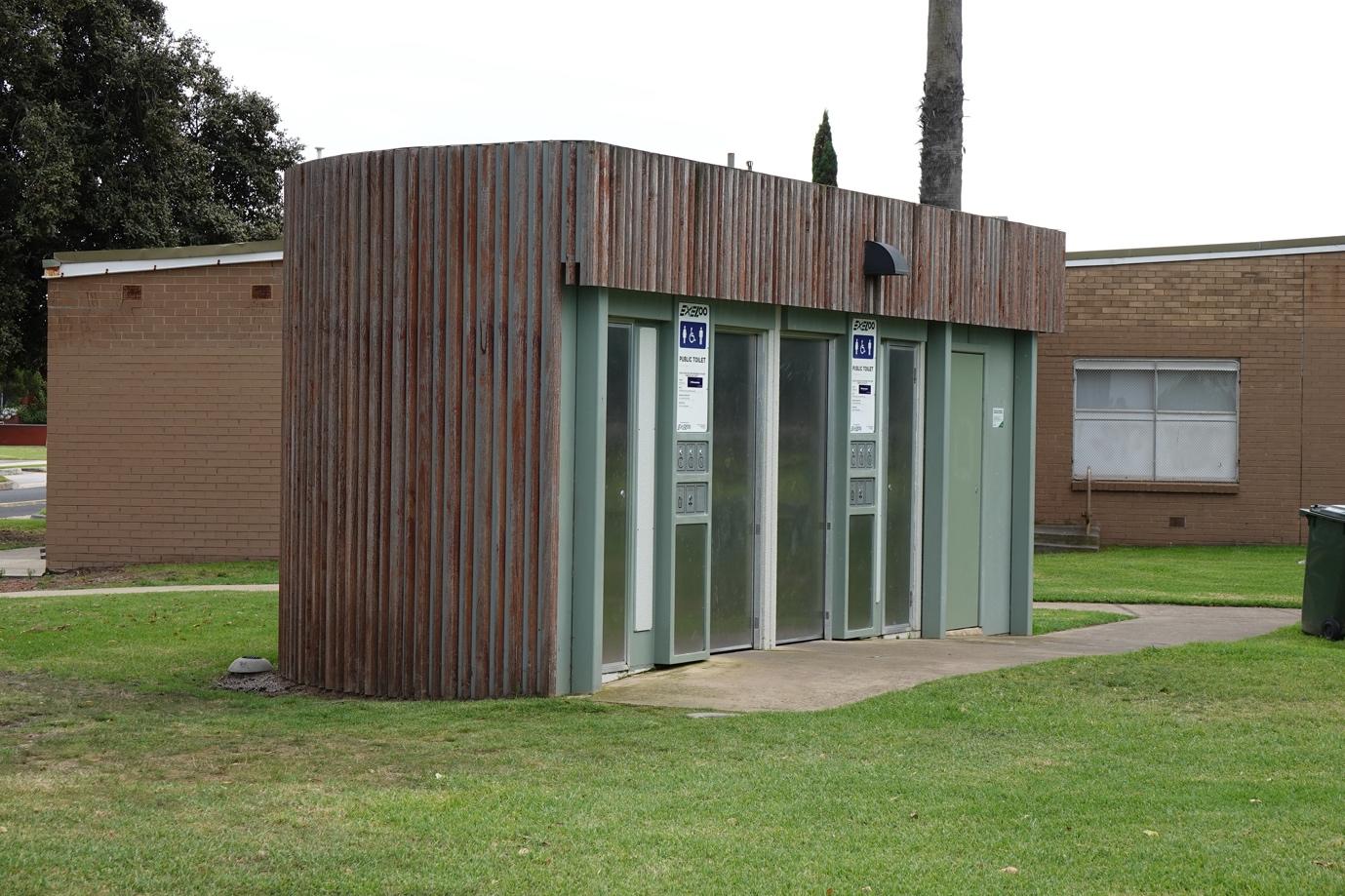
30
Hobsons Bay Public Toilet Strategy
November 2022
Logan Reserve, Altona
6.1 Proposed Public Toilet projects and priorities
Anticipated costs
The following anticipated costs have been utilised in developing a ten year budget framework.
Component
Traditional
Traditional
Traditional
Exeloo single unit $170,000 $250,000 $225,000
Exeloo double unit $280,000 $350,000 $325,000
Refurbish existing structure $150,000 $300,000 $225,000
Changing Places $150,000 $180,000 $170,000
Table 14
Anticipated project costs
Exclusions
Hobsons Bay Public Toilet Strategy November 2022 31
6 Implementation
Anticipated unit costs Range Cost applied
proprietary toilet unit
small $150,000 $200,000 $175,000
proprietary
toilet unit large $190,000 $250,000 $225,000
proprietary toilet unit high profile $400,000 $500,000 $450,000
figures
• Purchase of proprietary units • Design • Installation • Connection to existing services • Showers and drainage • Facility signage • Landscaping and furniture within immediate curtilage of facility • Bespoke design for major, high profile facilities
These
are based on recent experience and preliminary investigations of each project, and are provided for guidance and budgeting purposes. Note that actual costs can vary significantly depending on project and site circumstances and market conditions Inclusions
• Landscaping beyond immediate curtilage of structure • Major services connections or upgrades • Additional /extended facilities e.g. shelter, picnic setting
Directional signage in broader area
•
Based on application of Evaluation Framework, the following projects are recommended for the next ten years
Hobsons Bay Public Toilet Strategy November 2022 32 Site Suburb Eval score Recommend
ity Toilet
Ass fac’s Anticipat ed cost 1
14
2
13
3
13
4
5
6
7
8
9
10
11
12
13
14
15
16
17
18
19
20
Total
Table 15 Proposed
action Prior
type Size
Newport Park Newport
New High Traditional Large CP $225,000
Williamstown Bot’l Gardens Williamstown
New High Traditional Bespoke $450,000
Donald McLean Reserve Spotswood
Demolished – construct new High Traditional Large $225,000
Borrack Square Altona North 12 New High Automated Single $225,000
Bruce Comben Reserve Altona Meadows 12 Currently being planned High Traditional Large CP NA
The Circle Altona North 12 New High Automated Single $225,000
Sadler Reserve Williamstown 12 New Low Traditional Large CP $225,000
Blenheim Rd Reserve Altona North 11 Currently under construction High Traditional Small NA
Hudson’s Road Spotswood 11 New High Automated Single $225,000
G Den Dulk Reserve Altona 10 New Med Traditional Small $175,000
Homestead Run Reserve Seabrook 10 New Med Traditional Small $175,000
Langshaw Reserve Altona North 10 New Med Traditional Small $175,000
Leo Hoffman Reserve Newport 9 New Med Traditional Small $175,000
D. N. Duane Reserve Altona North 9 New or rely on pav’n Low Traditional Small $175,000
C. W. Carlsson Reserve Altona Meadows 9 New Low Traditional Single $175,000
Ford Reserve Altona 8 Demolish existing High NA NA $30,000
R J Cooper Reserve Altona North 8 New Low Traditional Small $175,000
Warmies Boat Ramp Newport NA Replace or upgrade Med Traditional / Exeloo Med $300,000
W.G. Cresser Reserve Seaholme NA Demolish High NA NA $30,000
Harrington Square Altona NA Replace or upgrade Low Automated Single $300,000
anticipated cost $3,685,000
PTS implementation
Hobsons Bay Public Toilet Strategy November 2022 33 Plan 2 Proposed actions 2022-32 Hobsons Bay Mun c pa ty Proposed Actions 2022 2032 Demol ion New Refurb shment Ra l Stat ons Ra lway L ne Ma or Road Road Water Areas Open Space LEGEND
6.2 Further work
Following is further to work that is recommended to improve Council’s access to information and understanding of the issues that will affect the provision of toilets over the next ten years.
1. Update the database of public toilets
• Clarify distinction between independent public toilets that are covered by the PTS, and toilets that are incorporated into other facilities or privately owned that are not covered by the PTS
• Record information on:
Type
Configuration
Numbers and types of cubicles
Locations within the hierarchies of Open Spaces and Activity Centres
Adjacent facilities and equipment
2. User informed engagement
• Are people experiencing any particular barriers to inclusion and participation in community life?
• Consider engaging with a diverse range of community members when developing new or upgrading existing toilets to identify opportunities for improvements and consider any perceived barriers to usage
3. Monitor usage and demand
• Establish a program of research to provide improved information on usage and demand for toilets to assist in decision making regarding locations, configurations and numbers of facilities
6.3 Associated documents
• Public Toilet database
Hobsons Bay Public Toilet Strategy November 2022 34
○
○
○
○
○
Document control and version history
Policy Name
Object ID A
Agility Document Number
Responsible Directorate Policy Owner Policy Type Date Adopted by [Council or ELT]
Review Date
Version Number Date Authorised by
Draft 1 20/9/22 IR Draft Final 17/10/22 IR Final 19/10/22 IR Final (minor corrections) 7/11/22 IR
Hobsons
Strategy November 2022 35
Bay Public Toilet
Sites for new PT suggested by community
Suggested Site Suburb Response
G Den Dulk Reserve Altona
Include in evaluation, investigating provision via Latitude property adjacent
Need expected to be me by future toilets in proposed Hobsons Bay Wetland Centre Homestead Run Reserve Seabrook Include in evaluation
The 100 Steps of Federation, Truganina Park Altona Meadows
Paisley Park Altona North Toilet currently under construction nearby at Blenheim Rd Reserve
Williamstown Swimming & Lifesaving Club Williamstown
Existing toilets, new toilets under consideration
Paine Reserve Newport Existing toilet at Newport Community Hub
Bryan Martin Oval Newport Existing toilet at Newport Community Hub Cherry Lake Altona Existing toilets x 2 Armstrong Reserve Newport Small local park, not supported Hudsons Road/Spotswood Train Station Spotswood Include in evaluation
Shared Trail Altona Altona Meadows
Location vague, numerous existing toilets along trail Skeleton Creek Parks Vic Ford Point Cook Toilet recently constructed nearby at Tatman Reserve
Bruce Comben Reserve Altona Meadows Toilet currently in planning
The Warmies Newport Existing toilets nearby at Williamstown boat ramp
A H Ford Reserve Altona Demolish existing toilet, evaluate need for new
P A Burns Reserve Altona Recently constructed Point Gellibrand (Timeball Tower) Battery Road Williamstown Parks Vic land, existing Parks Vic toilet nearby
Fearon Reserve Williamstown Existing toilet, additional considered for Sadler Reserve
D. N. Duane Reserve Altona North
Toilet recently constructed nearby at Brooklyn Res, include in evaluation, investigate access to toilet at pavilion Williamstown North Train Station Williamstown Level Crossing Removal project, no toilets provided
Langshaw Reserve Altona North Include in evaluation
C W Carlsson Reserve Altona Meadows Include in evaluation, Hobsons Bay Wetland Centre
Newport Park Newport Include in evaluation

Hobsons Bay Public Toilet Strategy November 2022 36

Hobsons Bay Public Toilet Strategy November 2022 37
Toilet proposal evaluation template
Toilet proposal evaluation - New Location analysis Site Address Suburb Source of proposal/request: Alternative toilet facilities: Distance from site Access/Barriers Is an additional toilet required? Yes No Demand: Local Data Community requests Demography Score /5 Strategic alignment Open Space Hierarchy Activity Centre Hierarchy Foreshore Planning Status Score /5 Context and siting analysis Appropriate site availability Access and linkages Pedestrian traffic Visibility Context Score /5 0 /15 Adjacent destinations/attractors Sports pavilion (list sports) Location features Topography Geology/Soil Linkages Potential toilet users Possible associated facilities Score Total score
Hobsons Bay City Council Public Toilet Strategy













































































































































